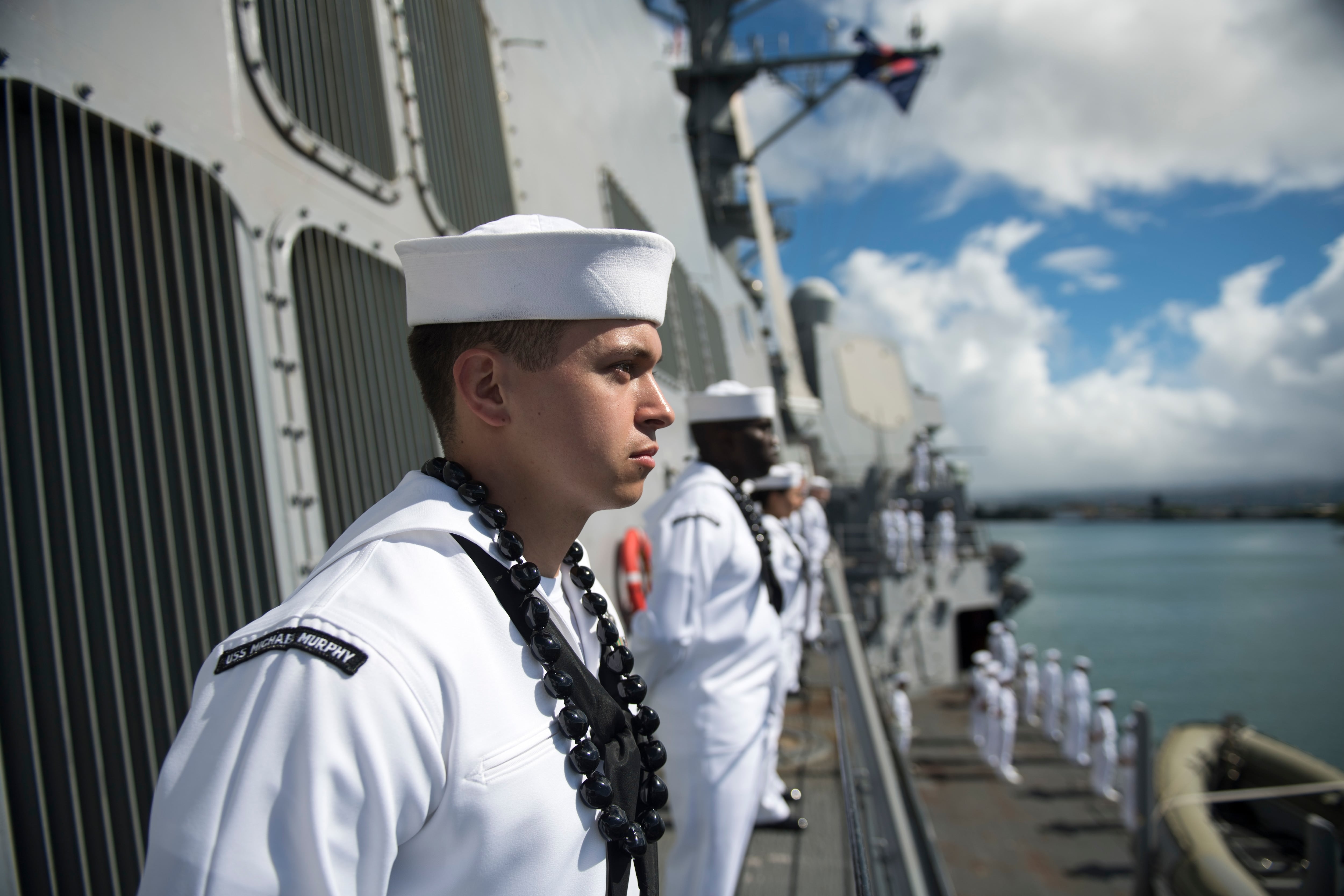Needing to fill critical billets and grow by 4,000 enlisted sailors by next fall, the Navy has extended up-or-out limits for junior enlisted sailors and also cancelled its early out programs.
The two major changes will help the Navy grow its current active-duty force of about 324,000 up to 328,000 by the end of the fiscal year — and potentially more beyond that.
“We are in a growing Navy,” Vice Adm. Robert P. Burke, the chief of Naval Personnel, wrote in a Dec. 14 Navy-wide message.
“This requires more people, at a time when we are still working our way back to desired sea duty manning levels, and when the competition for talent is especially keen. We will certainly recruit and train many more Sailors to help meet these demands, but that will not be enough.”
Effective Feb. 1, active-duty sailors at the pay grade of E-3 must advance to E-4 by the time they hit the six-year mark, a one-year extension of the Navy’s current policy which forces sailors to leave the service if they fail to advance by the five-year mark.
Meanwhile, the Navy has officially canceled it’s Enlisted Early Transition program in effect since 2015, which allowed sailors in overmanned ratings to get out of the service up to two years early with their skipper’s approval.
Up-or-out eased ... again
The Navy’s up-or-out limits, called high-year tenure, or HYT, require sailors to advance to certain pay grades along a certain timeline or face being discharged.
Since the Department of Defense allows individual services to set these limits independently, the Navy can adjust those up-or-out caps to shape the size of the force. The Navy tightened these limits during two decades of force draw-downs, but has now reversed course.
This announcement comes on the heels of the Navy’s two-year extension of the high-year tenure limits for E-4, E-5 and E-6, which went into effect in August.
That the extension of petty officer limits could allow as many as 3,000 sailors to remain on active-duty over the next couple years, officials told Navy Times in June.
The one-year E-3 extension will also help increase the size of the force as well, retaining more sailors in the short-term — there are currently 1,280 E-3s slated to hit the five-year limit in 2018.
RELATED

Long-term benefits to the service, officials say, will be when many of these sailors move up to E-4 in the next year.
Sailors waiting for — or currently holding — HYT separation orders due to kick in before Feb. 1, 2018, who want to stay in need to request to stay in on or before Jan. 31.
Those currently on Type 2, 3 or 4 sea duty will be extended at their present duty station to meet a normal tour length, or just until their new HYT date, whichever comes first.
Those on shore duty could get orders back to sea to fill critical billets, depending on the Navy’s needs for particular skills.
Navy officials also say HYT waivers for enlisted sailors at all paygrades who volunteer for sea duty will be considered on a case-by-case basis.
No more early outs
In ending its only remaining early out program, the service is distancing itself from two decades of draw-downs that resulted in dropping the Navy’s overall strength from nearly half a million sailors to as low as 315,000 a few years ago.
Implemented in 2008, the program initially allowed sailors to leave up to one year early, and was expanded to up to two years in 2011. But the program was cancelled soon afterward in the wake of extreme at-sea manpower shortages.
Officials revitalized the program in 2014 to ease overmanning in certain ratings, but it has now been canceled for good.
Future growth on the way
For now Navy officials remain mum on long-term manpower plans, these moves position the service to continue growing in the immediate future.
As of Dec. 13, the Navy’s active-duty force stood at 323,856 officers and enlisted sailors, a number slated to grow to 328,000 by the end of the fiscal year.
The Navy’s recruiting goals for 2018 include bringing in 37,700 new enlisted recruits, up from 35,200 in 2017. What ’the next steps will be in terms of end-strength increases won’t be clear until the 2019 budget is released early next year, but Vice Adm. Burke wants sailors to be ready for change.
“It has been decades since the last period of major personnel growth in our Navy,” Burke said. “You will see many additional policy changes in the coming weeks and months to set us on the right course.”
Mark D. Faram is a former reporter for Navy Times. He was a senior writer covering personnel, cultural and historical issues. A nine-year active duty Navy veteran, Faram served from 1978 to 1987 as a Navy Diver and photographer.





